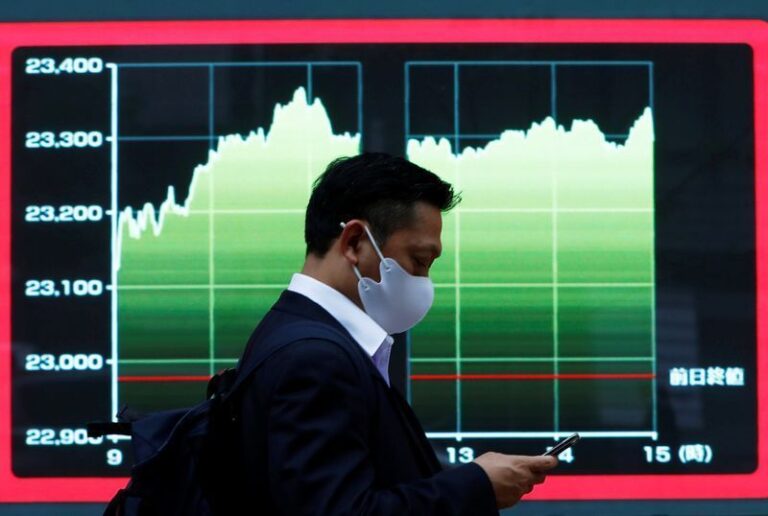
(Reuters) – A gauge of Asian shares hit a record peak on Monday on hopes of a much-needed U.S. stimulus package before year-end just as coronavirus vaccines roll out, while oil prices hovered near their highest since March.
MSCI’s broadest index of Asia-Pacific shares outside Japan rose 0.2% to 643.1 points, on track for its fifth straight session of gains.
It is up 16.3% so far this year, the best since a 33% jump in 2017.
Japan’s Nikkei added 0.1% while Australian shares climbed 0.8%.
Britain is preparing to become the first country to roll out the Pfizer/BioNTech COVID-19 vaccine this week. U.S. authorities will also this week discuss the programme before the expected first round of vaccinations this month.
Hopes the vaccines will help curb the pandemic which has so far killed more than 1.5 million people globally sent shares soaring in recent weeks.
On Wall Street, stock indexes reached fresh all-time highs on Friday with the Dow rising 0.8%, the S&P 500 gaining 0.9% and the Nasdaq adding 0.7%.
“The vaccine will break the link between mobility and infection rate, allowing for the strongest global GDP growth in more than two decades,” JPMorgan analysts wrote in a note, forecasting global growth of 4.7% in 2021.
“Tracking second waves through October and November, economic activity has surprised to the upside. This is true in both Europe and the U.S. This may be why financial markets have largely ignored the spike in cases, hospitalizations, and deaths.”
Still, expectations of a U.S. stimulus gathered pace after weak payrolls data last week.
The U.S. economy added the fewest workers in six months in November, with nonfarm payrolls increasing by 245,000 jobs last month, much lower than expectations for a 469,000 increase.
A resurgence of the virus in many developed countries, including the United States remains a threat.
California reported more than 30,000 new cases on Sunday, exceeding the state’s previous high of 21,986 set on Dec. 4, and marked a new record for hospitalized COVID-19 patients. New Jersey, North Carolina, Virginia and West Virginia also announced record one-day rises in new infections.
More than 23 million people in Southern California were preparing on Sunday to face the harshest lockdowns in the United States.
In currencies, investor focus is on a last-ditch attempt by Britain and the European Union to strike a post-Brexit trade deal this week, with probably just days left for negotiators to avert a chaotic parting of ways at the end of the year.
British Prime Minister Boris Johnson and European Commission President Ursula von der Leyen are due to hold a call on Monday in the hope that, by then, stubborn differences over fishing rights in UK waters, fair competition and ways to solve future disputes will have narrowed.
If there is no deal, a five-year Brexit divorce will end messily just as Britain and its former EU partners grapple with the severe economic cost of the COVID-19 pandemic.
The pound was down 0.2% at $1.3412 while the single currency was flat at $1.2122, not too far from an April 2018 high of $1.2177.
The risk sensitive Australian dollar was mildly positive at $0.7430.
That left the U.S. dollar little changed at 90.808 against a basket of major currencies, after hitting a 2-1/2 year low last week.
In commodities, oil prices hovered near their highest since March on Friday amid expectations of a U.S. economic stimulus package and the possibility of a vaccine.
U.S. crude was off 13 cents at $46.13 per barrel and Brent was down at $49.10. Brent has lost about a quarter of its value this year so far.
Spot gold, which hit a record high of $2,072.49 an ounce, was last at $1,837.9, still up a hefty 21% this year.






